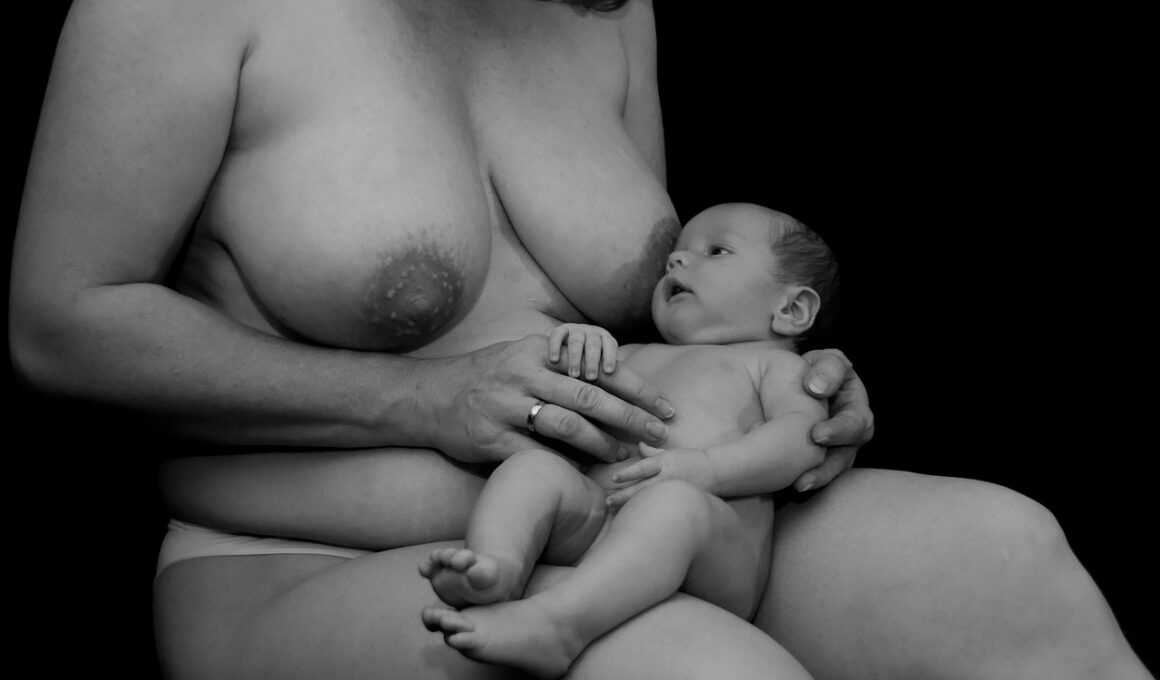Common Myths About Diastasis Recti Debunked
Diastasis recti is often misunderstood, leading to many incorrect beliefs about its impact on postpartum recovery. One common myth is that diastasis only happens during pregnancy. In reality, this separation can occur in various individuals due to factors like obesity or intense physical activity. Unfortunately, not addressing this condition can lead to further complications, such as lower back pain and poor posture. Another misconception is that diastasis recti only affects women who have had multiple pregnancies. Yet, even first-time moms can experience this issue. It’s crucial to understand that anyone can develop diastasis regardless of their pregnancy history. Furthermore, there’s a belief that diastasis recti is irreversible and requires surgery for correction. With the right exercises, many individuals can restore their core muscles and improve their situation. Evidence shows that engaging in targeted exercises during recovery can have significant benefits. Lastly, some think that abdominal exercises like crunches will help. In fact, certain movements can worsen diastasis by increasing intra-abdominal pressure. Understanding these myths is essential for effective postpartum fitness and rehabilitation.
Another prevalent myth surrounding diastasis recti is the notion that it doesn’t require treatment. This misunderstanding can lead individuals to ignore the issue, thinking it’s merely a cosmetic concern. In truth, diastasis recti can significantly affect a person’s daily activities and overall health. It may lead to pain and discomfort, affecting posture and strengthening movements. Ignoring this condition can even exacerbate other physical problems. Some believe that simply performing high-intensity core workouts will resolve diastasis. However, this often leads to worsening the condition because these activities might increase abdominal pressure. A more moderate and guided approach focused on core stability and proper alignment should be embraced instead. Moreover, there’s an assumption that diastasis recti is a purely physical issue, disregarding its psychological impact. Many individuals feel self-conscious about their appearance postpartum, linking their self-esteem to their abdominal status. This can hinder an overall recovery process. Understanding diastasis recti’s implications can help guide better physical and mental health approaches, ensuring individuals do not overlook necessary steps toward a healthier recovery.
It’s also vital to address the belief that only healthcare professionals can diagnose diastasis recti. While seeking a professional assessment is essential, individuals can perform simple self-check techniques to identify potential issues at home. Knowing how to check for diastasis can empower individuals and encourage them to take proactive steps in their recovery process. Understanding how to measure the gap between abdominal muscles can help gauge the severity of the condition. In addition, another myth suggests that abdominal binders or wraps are the silver bullet for fixing diastasis. While they may provide temporary support, relying solely on these aids without engaging in appropriate exercises may not produce lasting results. Standalone support does not address underlying muscle imbalances or promote core strength. Additionally, some believe that after a certain time postpartum, diastasis will naturally heal without intervention. This belief can be misleading since each body responds differently. Individuals should not assume that recovery is automatic. Overall, education on the topic can empower women to take control of their postpartum fitness journey and seek effective strategies.
Recognizing Effective Exercises
When it comes to effective exercises for diastasis recti, many individuals mistakenly think that all abdominal workouts improve their condition. In reality, exercises focusing on rebuilding core strength and stability are essential. Recommended practices usually emphasize controlled movements, like pelvic tilts and modified planks, specifically designed to engage the transverse abdominal muscles. These are the deepest abdominal muscles crucial for core stability. Moreover, strengthening the pelvic floor should also be a focal point since it works in conjunction with the core muscles. Integrating pelvic floor exercises helps improve overall alignment and support. It’s important to highlight that proper breathing techniques, such as diaphragmatic breathing, can further aid in core rehabilitation. Breathing correctly can facilitate engagement of the correct muscles and promote better intra-abdominal pressure control. Engaging a qualified physical therapist or a postpartum specialist can also greatly benefit some individuals. Personal guidance tailored to individual needs can enhance effectiveness and safety. Understanding which movements to embrace and which to avoid protects the individual from potential injuries and supports recovery in a healthy way. Take the time to educate yourself on what truly supports healing.
Another myth regarding postpartum fitness and diastasis recti includes the misconception that surgery is the only solution. While surgical intervention is available for severe cases, many individuals can achieve positive results through non-surgical means. Effective exercises and targeted rehabilitation can lead to substantial improvement, reducing abdominal separation without surgeries. Postpartum recovery can be significant when managing diastasis recti. It’s crucial to emphasize that patience is key in this recovery journey. Often progress is gradual, and instant results should not be expected. Adopting a positive mindset focused on steady growth and gradual strengthening can make a difference in how individuals approach their fitness. Additionally, some might feel that every exercise is beneficial during postpartum recovery. While movement is vital, not all exercises are safe or appropriate for those with diastasis recti. Engaging in movements that create excessive pressure on the abdomen can hinder progress. Understanding the type of activity that benefits specific bodily conditions is critical for rehabilitation. Investing time in learning accurate information will empower you throughout your postpartum journey back to fitness.
There remains a pervasive belief that individuals should avoid all physical activities after childbirth to prevent worsening diastasis recti. However, this approach is counterproductive. Engaging in specific, low-impact exercises can aid recovery and support healing. Gentle activity encourages circulation and strengthens muscles that stabilize the core. The key lies in choosing the right activities that do not strain the abdominal region but promote recovery. Light walking or specific yoga practices can be excellent starting points. Another common myth suggests that diastasis recti only occurs in a certain body type. In reality, this condition can affect people of various shapes and sizes. Genetics, lifestyle, and pressure factors all play a role in the development of diastasis recti. It is essential for people to understand that being informed is the first step to addressing this condition effectively. Lastly, there’s a misconception that diastasis recti can be entirely eliminated. While significant improvements can be made, some lasting separation may still exist. Understanding realistic goals promotes a healthier relationship with your recovery journey as you regain strength.
Conclusion: Empowering Your Journey
In conclusion, understanding diastasis recti is crucial for anyone navigating postpartum recovery. Dispelling common myths and misconceptions empowers individuals to seek effective strategies and approaches. Instead of feeling overwhelmed or discouraged by misinformation, focus on education to promote a healthier physical journey. Incorporating effective exercises directed by professionals can lead to improvement while fostering a positive mindset and realistic expectations. Cultivating a supportive community is also vital during this time. Sharing experiences with others can provide encouragement and guidance throughout the recovery process. Always remember that postpartum fitness is a personal journey, and the path you take may differ from others. Each individual has a unique experience based on their body, history, and recovery goals. Dedication to accurate information aligning with your needs will yield progressive results. Ultimately, embracing your body, searching for the right support, and committing to informed strategies can significantly help manage diastasis recti. Don’t underestimate the power of knowledge; it can be the driving force behind an effective recovery. Take proactive steps toward regaining strength and confidence in your postpartum journey.
Empowerment in fitness goes beyond physical strengths; it incorporates emotional and mental resilience as well. Tackling diastasis recti involves addressing both areas for comprehensive recovery. Always consult healthcare providers when beginning any new exercise or rehabilitation program post-childbirth. They can help identify necessary adjustments tailored to your unique situation. Furthermore, cultivating positive habits around fitness and health can create an environment conducive to healing. Creating an achievable plan that accommodates your personal rhythms ensures consistency and motivation. Utilize resources available within the community, such as online platforms or local fitness groups, to facilitate continuous learning and improvement. Understanding various recovery experiences deepens awareness and can inspire motivation. As you advance in your journey, remember to celebrate your progress, regardless of size or speed. Every step forward is momentum gained towards a healthier, more confident self. Moving forward from misconceptions can lead to enhanced well-being and quality of life. Stay curious, ask questions, and engage with fellow postpartum individuals. Embrace the growth that comes with your journey towards awareness, understanding, and the celebration of your personal postpartum experience.


